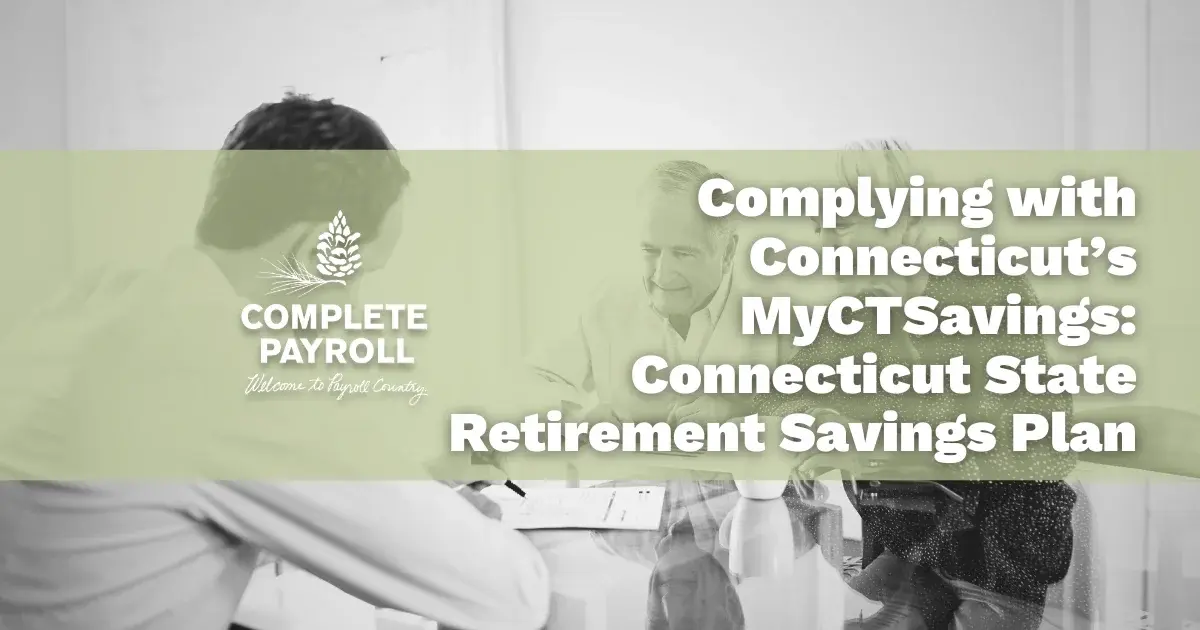The SECURE 2.0 Act has brought in a range of changes to enhance the retirement savings landscape. While some amendments have already been implemented in 2023 and others are scheduled for 2025 and beyond, this article focuses on the vital reforms that will take effect in 2024. These particular changes have the potential to greatly benefit a significant number of individuals and small businesses.`
1. IRA Catch-Up Contributions Adjusted for Inflation
Previously, those 50 or older by the end of a tax year could increase their IRA contribution by a non-inflation-indexed $1,000 catch-up amount. With the new provisions, this amount will adjust according to cost-of-living changes.
- Effective Date: Tax years after 2023
- Affected: Individuals nearing 50 with IRAs.
2. Employer Matching for Student Loan Payments
Employers can now make matching contributions to defined contribution plans under a 401(k) plan, 403(b) plan, governmental 457(b) plan, or SIMPLE IRA, corresponding to employees' student loan payments. Expanding the ways to assist employees in their financial journey.
- Effective Date: Contributions made for plan years after 2023
- Affected: Employees with student loans and employers offering retirement plans like 401(k), 403(b), 457(b), or SIMPLE IRA's.
3. Eliminating Penalty on Early Withdrawal for Emergencies
Before, no provision excluded personal or family emergency withdrawals from the 10% early withdrawal penalty. Under the new reform, you can make an "emergency personal expense distribution" from an eligible defined contribution plan once a year without being charged the 10% early withdrawal tax. However, you can only withdraw up to $1,000. If you recontribute the withdrawn amount within three years, it won't be taxed, but no additional withdrawals are permissible during the repayment period, until the full amount of the withdrawal is repaid.
- Effective Date: Distributions after 2023
- Affected: Those under 59-1/2 with IRAs, 401(k)s, etc.
4. Higher Nonelective Contributions to SIMPLE Plans
Under the previous rules, employers had restrictions on contributions to SIMPLE plans. The new regulations now allow for extra non-elective contributions of up to 10% of compensation for each eligible employee who has received at least $5,000 of compensation for the year. It's important to note that these nonelective contributions cannot exceed $5,000 or 10% of compensation per employee for the year, whichever is less.
- Effective Date: Tax years after 2023
- Affected: Employers with SIMPLE 401k or IRA plans and participating employees.
5. Enhanced Contribution Limits for SIMPLE Plans
The maximum contribution to SIMPLE plans sees a notable increase, benefiting both employers and employees. The maximum amount you can contribute to your retirement savings plan is 110% of $10,000 adjusted for inflation, effective for the calendar year 2024. However, this is only possible if the employer meets certain qualifications including:
- having no more than 25 employees or
- elects for the increase to apply
Additionally, if the employer meets the above conditions, the catch-up contribution limit is 110% of the catch-up dollar amount in effect for the calendar year 2024, which is $2,500 (as adjusted for inflation).
- Effective Date: Tax years after 2023
- Affected: Employers and employees with SIMPLE plans.
6. Introduction of “Starter 401(k)s” and “Safe Harbor Deferral-Only 403(b)s”
In a bid to foster inclusivity, smaller employers can now initiate certain retirement plans without the usual associated challenges. Employers who currently do not have a retirement plan, except for a collectively bargained plan, have the option to set up a "starter 401(k) deferral-only arrangement" or a "safe harbor deferral-only 403(b) plan."
These new plans are considered to meet the nondiscrimination tests, and automatic enrollment and participation requirements are mandatory for both plans. No employer contributions are permitted, and employee contributions are capped at $6,000 per year, with inflation indexing after 2024.
- Effective Date: Plan years after 2023
- Affected: Employers without existing 401(k) or 403(b) plans.
7. Tax-Free Transfers from 529 Plans to Roth IRAs
The act facilitates transfers from 529 plans to Roth IRAs under specific circumstances, enhancing the flexibility of financial planning. Now, after 15 years, a 529 plan distribution isn't taxed if it's a direct transfer to a Roth IRA for the beneficiary.
- Effective Date: Distributions after 2023
- Affected: Individuals with 529 plans and/or Roth IRAs.
8. Extended Deadline for Beneficial Plan Amendments
The deadline for adopting discretionary plan amendments that boost participant benefits sees a considerable extension. Now, participants' benefits can be increased by adopting discretionary plan amendments before the employer's tax return due date (including extensions).
- Effective Date: Plan years after 2023
- Affected: Employers with retirement plans.
9. Roth Accounts Exempted from Pre-Death RMD Rules
Designated Roth accounts are now free from specific required minimum distribution rules during the account holder's life. While the account owner is alive, RMDs are not required from designated Roth accounts.
- Effective Date: Tax years after 2023
- Affected: Older individuals with designated Roth accounts.
10. Flexibility in RMD Determination for Surviving Spouses
Surviving spouses now have a choice in how they determine their required minimum distributions, ensuring better financial outcomes. Spouses may now elect to have RMDs determined using the Uniform Lifetime Table rather than the Single Life Table.
- Effective Date: Calendar years after 2023
- Affected: Married plan participants.
11. Designated Roth Contributions for Higher-Paid Employees
High-earning employees making "catch-up" contributions to certain plans will now have to make them as designated Roth (after-tax) contributions. Employees earning over $145,000 who want to make catch-up contributions to their 401(k), 403(b), or 457(b) plan must designate them as Roth contributions made under an after-tax basis.
- Effective: Tax years after 2023
- Affected: Employers and high-earning employees in specific retirement plans.
In conclusion, it is important to remember that the SECURE 2.0 Act's 2024 provisions are expected to bring considerable positive changes, and staying informed and seeking guidance can help ensure a brighter financial future.

















 Get Instant Blog Notifications
Get Instant Blog Notifications

%20Roth%20Contributions%20Under%20the%20SECURE%20Act%202.0.webp)
